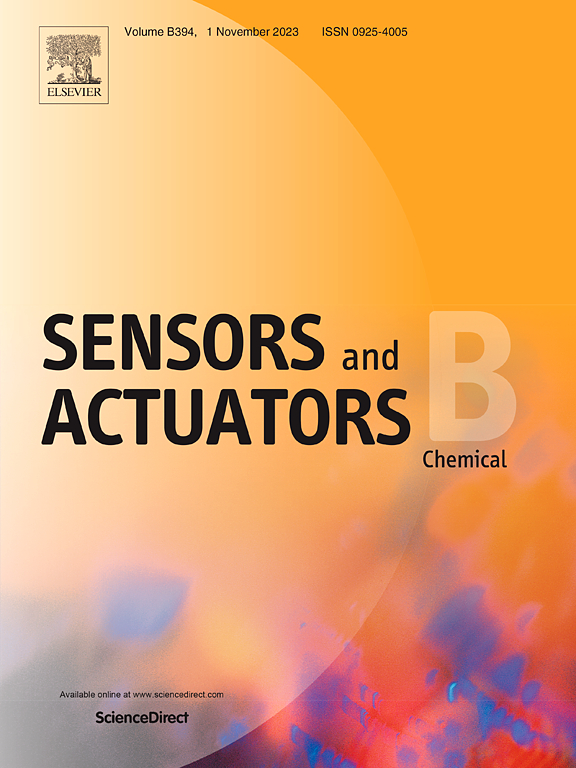A versatile 980 nm excitable small molecule for short-wave infrared fluorescence imaging guided type-I photodynamic/photothermal therapy
IF 8
1区 化学
Q1 CHEMISTRY, ANALYTICAL
引用次数: 0
Abstract
Current nanoagents for efficient deep-seated tumor phototheranostics are still facing many barriers, such as limited light penetration depth, insufficient reactive oxygen species production in anaerobic microenvironment, and dissatisfied imaging accuracy. Herein, an A-D-A type small molecule BTP-3V was synthesized. The strong push-pull effect enabled BTP-3V nanoparticles (NPs) to absorb light in the region of 600–1100 nm (extinction coefficient at 980 nm: 3.92 × 104 M−1 cm−1) and emit in the region of 1000–1400 nm (Stokes shift: 283 nm). Upon 980 nm laser excitation, BTP-3V NPs showed efficient hydroxyl radical and superoxide radical production for type-I photodynamic therapy, greatly overcoming the anaerobic disadvantage of malignant tumors. Moreover, the NPs also showed excellent photothermal performance with high photothermal conversion efficiency (39.4 %). In vitro and in vivo investigations corroborated that the biocompatible BTP-3V NPs exhibited remarkable anti-tumor outcome upon 980 nm laser irradiation, benefiting from the combination of type-I photodynamic and photothermal therapy. Significantly, with the short-wave infrared fluorescence emission, BTP-3V NPs could achieve high-resolution imaging of vascular structure, accurate localization of tumor and facile detection of the enrichment and distribution of NPs within the tumor. This study provides valuable insights into nanomaterials for deep-tissue phototheranostics.
用于短波红外荧光成像引导的 I 型光动力/光热疗法的多功能 980 纳米可激发小分子
目前用于深部肿瘤高效光疗的纳米药物仍面临许多障碍,如光穿透深度有限、厌氧微环境中活性氧产生不足、成像精度不理想等。本文合成了A-D-A型小分子BTP-3V。强推挽效应使BTP-3V纳米粒子(NPs)能够吸收600 ~ 1100 nm的光(980 nm处消光系数为3.92 × 104 M−1 cm−1),发射1000 ~ 1400 nm的光(Stokes位移为283 nm)。在980 nm激光激发下,BTP-3V NPs表现出高效的羟基自由基和超氧自由基生成,用于i型光动力治疗,极大地克服了恶性肿瘤的厌氧缺点。此外,NPs还表现出优异的光热性能,光热转换效率高达39.4%。体外和体内研究证实,生物相容性的BTP-3V NPs在980 nm激光照射下表现出显著的抗肿瘤效果,受益于i型光动力和光热治疗的结合。值得注意的是,通过短波红外荧光发射,BTP-3V NPs可以实现血管结构的高分辨率成像,准确定位肿瘤,方便检测肿瘤内NPs的富集和分布。本研究为纳米材料在深层组织光疗中的应用提供了有价值的见解。
本文章由计算机程序翻译,如有差异,请以英文原文为准。
求助全文
约1分钟内获得全文
求助全文
来源期刊

Sensors and Actuators B: Chemical
工程技术-电化学
CiteScore
14.60
自引率
11.90%
发文量
1776
审稿时长
3.2 months
期刊介绍:
Sensors & Actuators, B: Chemical is an international journal focused on the research and development of chemical transducers. It covers chemical sensors and biosensors, chemical actuators, and analytical microsystems. The journal is interdisciplinary, aiming to publish original works showcasing substantial advancements beyond the current state of the art in these fields, with practical applicability to solving meaningful analytical problems. Review articles are accepted by invitation from an Editor of the journal.
 求助内容:
求助内容: 应助结果提醒方式:
应助结果提醒方式:


